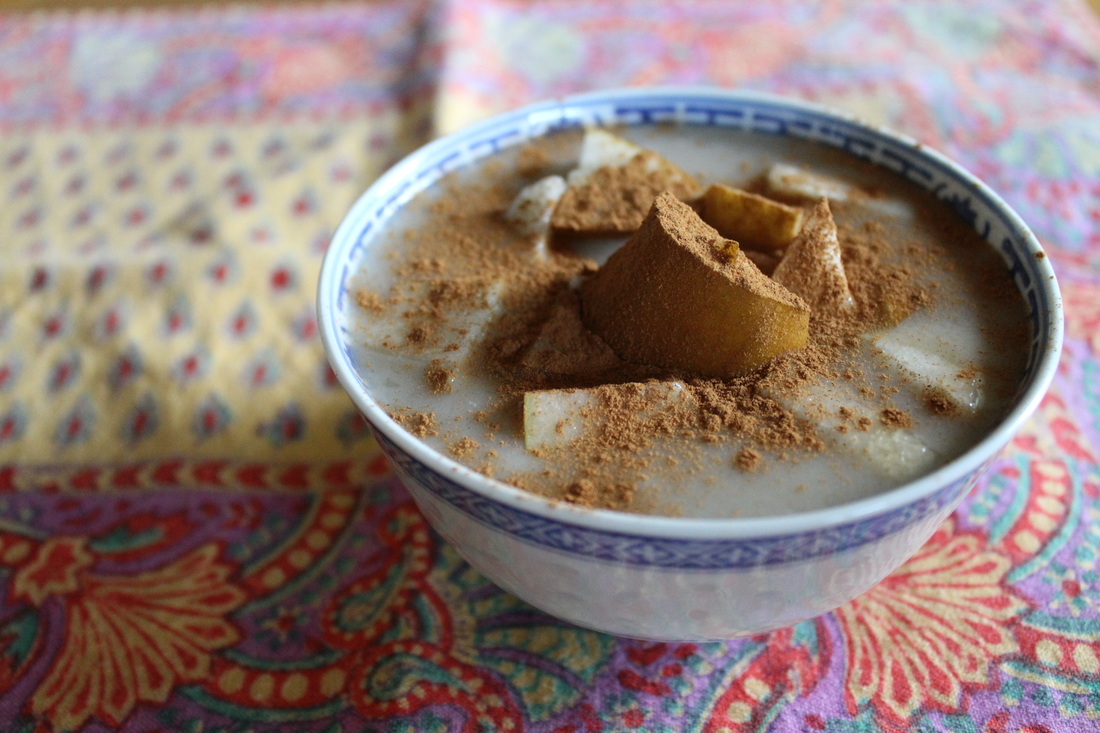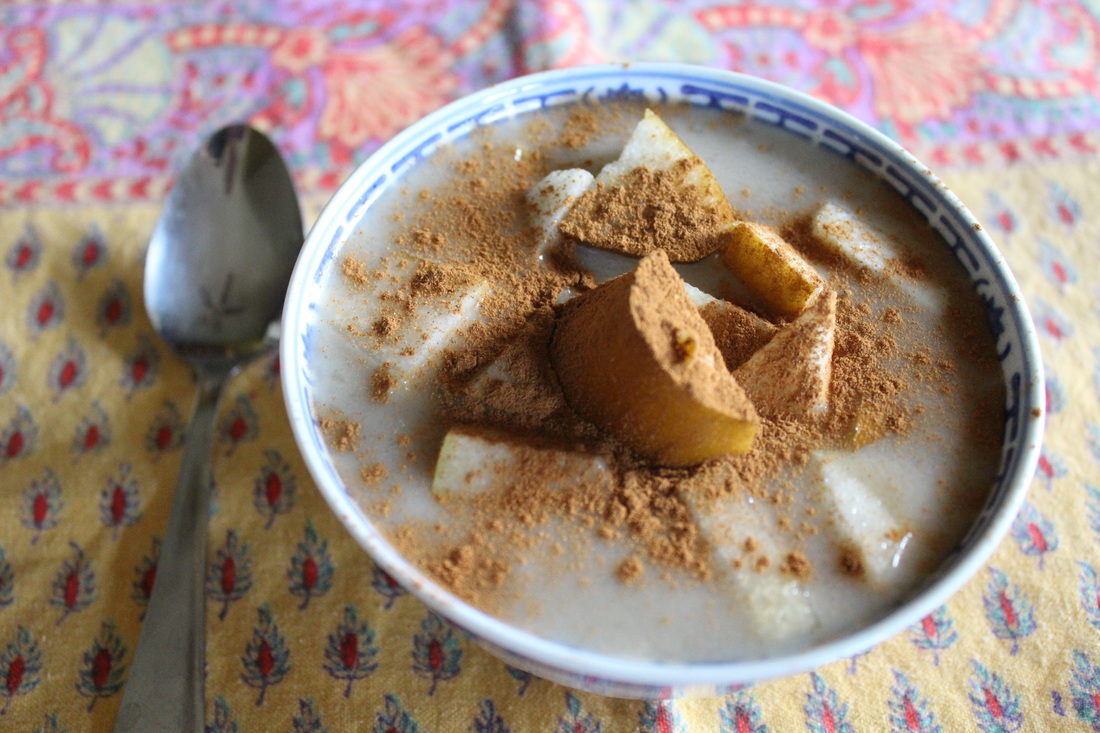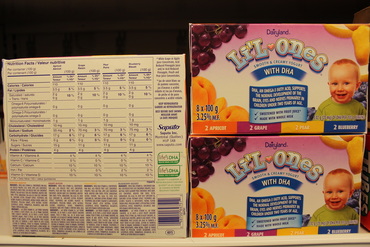
I'm neardy like that and looked into the history of yogurt and have pondered the evolution of how yogurt came into existence. Seems historians suspect the same thing I did. Shepherds herding their flocks, carrying milk in vessels like gourds, or skins, or something like the stomach skin bag introduced the bacterial culture by accident to the milk, and realized that the cultured milk was still edible and seemed to last longer along the journey. Vola, yogurt is born.
Yogurt has a long history, Ayurvedic scripts dating from around 6000B.C., reference the health benefits. It may be older than that, it's known that the first finding pertaining to domestication of cows go back to Libya around 9000 B.C. Understanding the living condition of the day doesn't leave a far stretch to estimate the introduction of bacteria and what happens in a temperate climate. (1)
As for the spelling, use what you like, it seems to be spelt both ways in Canada. It seems that joyurt is also spelled with a j in some countries. what's in a name, well, it might be more than we suspect. The idea that it is a health food is so discontented from the truth and only a small fraction of that very, very big dairy isle is actually healthy.
I personally eat a plant base yogurt and find most store bought brands lacking, there is no tang, the flavor limited, and the texture more like a thick pudding than a creamy yogurt, moreover, it's terribly expensive!
RECIPE;
To make easy homemade plant milk yogurt you will need a few ingredients;
Plant milk 1 litre; anything from almond, hemp, cashew, soy, or coconut.
Thickeners 2 tbsp; tapioca starch, non gmo cornstarch, flax or chia seed (soaked in warm water), agar agar powder, guar gum, liquid soy or sunflower lecithin.
Starter culture; 1/4 cup of high quality yogurt (dairy or plant) or a high quality live probiotic 1-2 capsules, or a plant based culture starter 1 packet. Start with less and work up to if you need to add more. unless you like a super tart sour cream!
Protein powder; 2 scoops of any protein powder you like organic pea, hemp, brown rice, lentil, or non-GMO soy. (hemp and brown rice are the least allergenic if those are your considerations.)
To the 1 litre of plant milk that only supplies 1-2 grams of protein per serving, the addition of a plant protein powder adds apx 9 grams of protein per serving, with the 1 gram gained from plant milk per cup (1 serving size) this jacks up the protein to 10 gram per serving, which matches or even surpasses a per serving of dairy yogurt.
Sweeteners; Agave, honey, dates, or stevia are natural sweeteners that I would suggest to add in small amounts to the final product but if you want to add to the recipe remember that less is more.
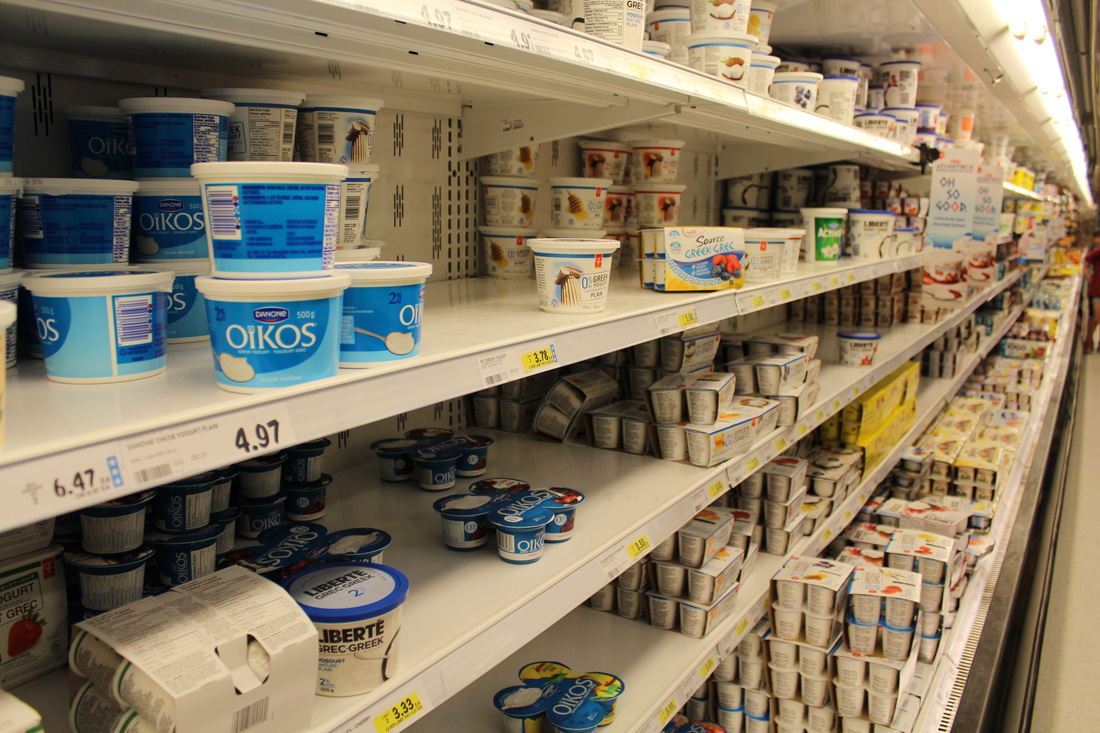
Antibiotics in milk, sugar, GMO high fructose corn syrup (deceptively labelled fructose or fructose syrup), artificial sweetener, artificial flavouring, unlabelled de-foaming agents, in plastic containers, and in one tub was listed tartrazine ( or yellow #5) an unsafe food dye, that has known to effect hyperactive children, people with asthma, and people with allergies to silicates (2,3). After looking through a whole isle of yogurt, more than 14 brands, and of the brands, different types and flavours, being advertised as children's food, perceived as a health food, almost all with sugar as the second ingredient! Only 2 tubs had anything close to a healthy ingredient list. ( this survey was done at a conventional store in Calgary, not a health food store.)
I was reminded of why it is so important to take back control of what we are eating , out of the ideals of multi national corporations, and back to our own homes, community farms, kitchens, and cooks. The Cornucopia Institute thinks so too, They have compiled a buyers guild to yogurt, comparing major brands and weeding through what companies are stating false claims in their advertising. Read the list and see how some of the most popular products score.
If you like the convenience of buying your yogurt and don't have time to read the Cornucopia's buyers guide , remember to look for the superior quality and source. One of the best ways to have a superior product is getting closer to who makes it, source out a local dairy at the farmers market, try the product, ask questions about the operation, get to know where your food comes from and trust that it is the healthiest that you can buy for yourself and your family. This includes dairy and plant yogurts alike!
The plant yogurts out there usually have slightly better ingredient lists, but still contain sweetener, albeit natural, the amount of sugar or sweetener is still more than I like in a health food.
If you need yogurt for a recipe or just want to pick it up at your local store, insist on organic, (pasture raised if dairy) and make sure to read the label! Sugar digested in the GI track can feed opportunistic strains of bacterium (these guys aren't the same as our beneficial strains of probiotics) and leave you without the benefits of why we are eating it in the first place!
Fermented foods are so important to help supply and harbour a healthy micrbiome inside our guts, a high quality product is vital. I feel that making it yourself gives you the control and creativity to make a superior health food.
HEALTH BENEFITS .........
Probiotics have been known to help or treat diarrhoea(4), IBS(5) very interesting read, see references), aiding healthy digestion, weight loss and management (6), allergies (7,8,9), boosts immune function (10,11), helps restore intestinal membrane in leaky gut (5,11 ), skin issues (10,11), better mood, helps depression (5,12,13 ), helps improve chronic fatigue syndrome (13), among a list of many more! I've reviewed many scholarly articles concluding the positive affects of probiotics and because I believe in the healing effects of food, I feel we need to bring 'everyday culturing' back into our food culture.
The major health benefit of yogurt are the probiotics through the fermentation process but there are other nutritional benefits like the essential minerals and a good source of protein, and although store bought almond, cashew and coconut yogurt can have just as much mineral content as dairy milk and might be argued that it has a better calcium to phosphorous ratio that makes the calcium more bio-available in the body, the plant based yogurts don't have as much protein per serving. This is one of the reasons I like to make my own.
With an easy to execute recipe, you can have the best of both worlds with an easily digestible plant yogurt, high in protein, good mineral composition, low or no sugar added, that is fresh and tastes DELICIOUS!
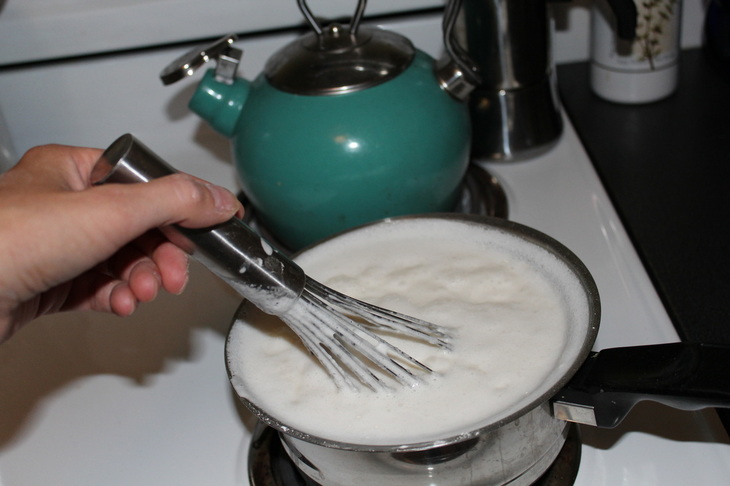
DIRECTIONS;
1. Heat the plant milk in a sauce pan on the stove at medium heat, whisk in your thickener , sweetener (if any), and flavours at this time, heat and whisk for 5-10mins. You want the milk to steam but not to boil. You will see the milk thicken throughout this time. (remember that it should thicken even more after being chilled in the fridge).
2.Turn the element off and add the protein powder, whisk well so that it is consistently blended. Leave it to cool for 20 mins.
3. Test the temperature, I don't have a thermometer so I do the finger test. I stick the finger in and if I feel I need to pull it out immediately, it's still too hot. If I stick it in and it's hot but the finger can handle it, the temp is somewhere between 100-110 degrees Celsius, perfect for the culture to be whisked in.
4. Whisk 2 probiotic tablets into the milk that you can officially call yogurt now.
5. Cover your glass container with a clean tea towel and place it in the oven with the light on. This should keep it just warm enough to keep the culture happy and growing.
6. Leave it to culture anywhere from 6-9 hrs depending on the way you like your yogurt. The longer you leave it the tarter and more cultured it will become. But I warn you not too leave it too long or it will start to smell like yeasty cheese and your boyfriend will complain of bad smells in the kitchen!
7. When it is finished to your satisfaction, place a air tight lid on the container(s) and keep it in the fridge. This will last up to 5 days. Remember that you have just made a fresh product with no preservatives so it will not last as long as store bought, and better for you that it doesn't!
Note on flavouring; Get creative, get inspired, My favourite is plain coconut milk with vanilla and cinnamon. I'll throw a banana in the mix sometimes, or dice up a pear that is the perfect flavour pair with the cinnamon.
Don't be disappointed if it doesn't work out perfectly the first time! I've read so many different recipes with times and quantities, every kitchen, oven, ingredient will blend together slightly differently. Realize that nothing is a waste! If it seems to be a sloppy mess but tastes okay, put it back in the sauce pan, add a 2 more tablespoons of thicker on med heat for 5-10mins to make it a good consistency and throw 2 more tbsps of probiotics in after it has cooled, but at this point put it directly in the fridge and skip the hrs of culturing. You will still come out with a product that has probiotic and it's a no fail no waste!
Enjoy the adventure!
1.http://www.penn.museum/sites/expedition/yogurt/
2.https://www.aafa.org/display.cfm?id=9&sub=20&cont=285
4.http://www.ncbi.nlm.nih.gov/pubmedhealth/PMH0072674/
5.http://www.ncbi.nlm.nih.gov/pmc/articles/PMC2886445/
6.http://www.livescience.com/24917-probiotics-burn-fat.html
7.http://bodyecology.com/articles/how_probiotics_help_prevent_allergies.php
8.http://www.ncbi.nlm.nih.gov/pmc/articles/PMC2883099/
9.http://psychcentral.com/lib/can-probiotics-prevent-childhood-allergies/
10. http://www.ncbi.nlm.nih.gov/pubmed/19442167
11. http://naturalmedicinejournal.com/journal/2010-03/nutritional-protocol-treatment-intestinal-permeability-defects-and-related
12. http://www.puristat.com/braingut/serotonin.aspx
